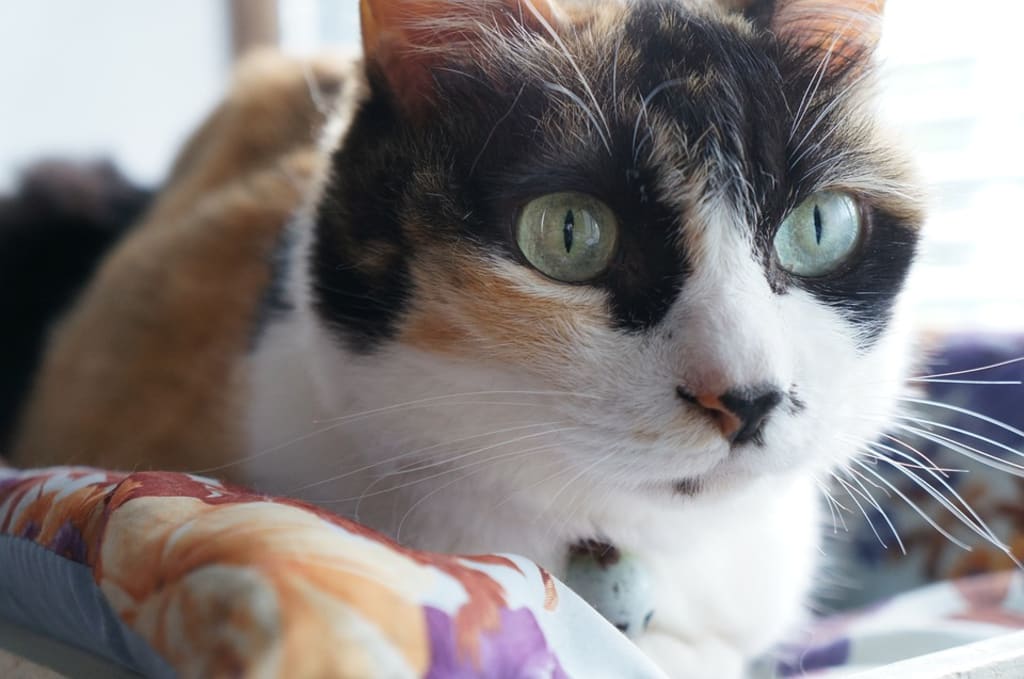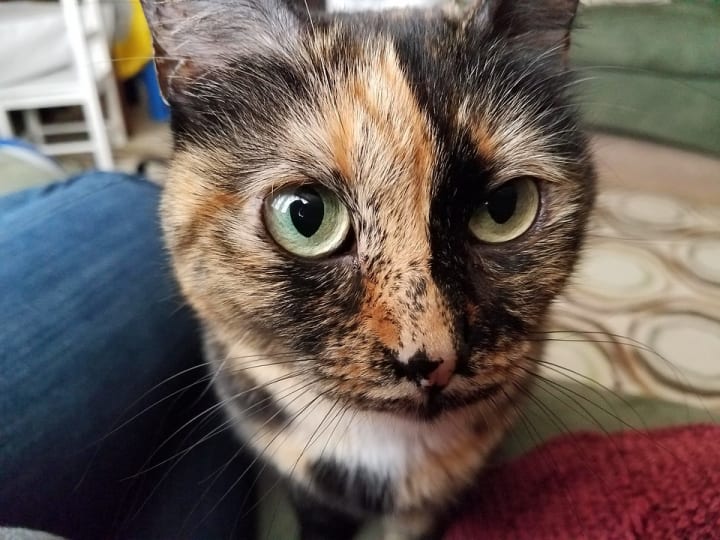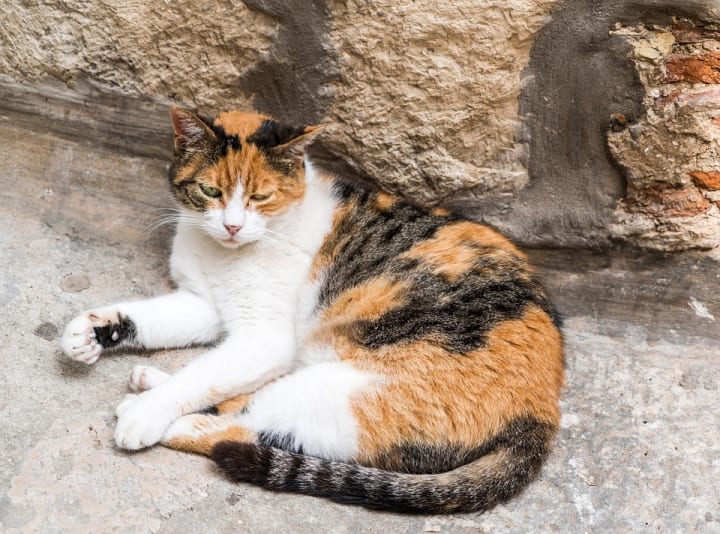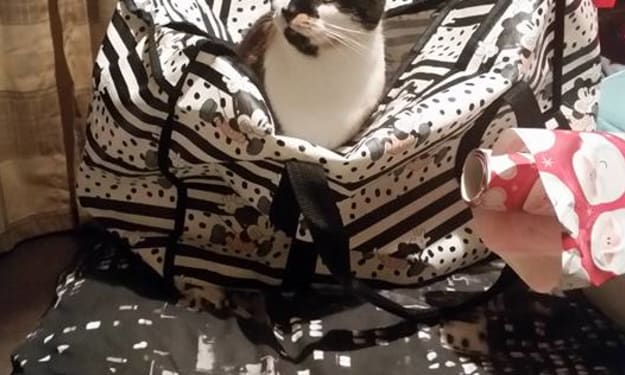Why Are Calico Cats Usually Female?
More than 99 percent of calico cats are female.

What is a calico cat?
The majority of calico cats are female. In fact, over 99 percent of them are. It is estimated that only 0.3 percent of calico cats are male, so why is this?
First, some background around this.
Although it seems as if a "calico" would be a type of breed among cats, it is, however, only a colour pattern. The term "calico" within cats stands for multi-coloured. This is why calico cats are orange, white, and black. Many people get calicos confused with tortoise shell cats (my mum was one of those people), however, tortoise shell cats are only two-toned. They do not have any white on their coats.
Interestingly, calico parents are often not calicos themselves, or even tortoise shell. The reason why they are born this colour depends on their genetic code
Some Biology...

A tortoise shell cat
Any biology enthusiast will understand how DNA and genetics work. In humans, we generally have 23 pairs of chromosomes. One of the pairs determines whether we are female or male. Whilst every human female carries X chromosomes in their eggs, only males will carry both X and Y chromosomes in their testes. It is the male who will determine the gender of their offspring. A combination of XX chromosomes will make the foetus a female, whilst a combination of XY will make the foetus a male. There are different genetic disorders which have resulted from an extra X or Y chromosome. This is similar in cats.
Cats usually have 19 pairs of chromosomes, making 38 singular chromosomes. Unsurprisingly, the pattern/colour of a cat's coat is determined by genetics. However, it is their X and Y chromosome (their sex chromosome) which almost entirely determine this. Similarly to humans, it is the genetic coding within the chromosomes which determines your features. This is where the important part comes.
The genetic coding within an X chromosome (in terms of colour) is either orange or black. The white colour is controlled by a different gene, entirely. Similarly to humans, female felines have two X chromosomes, ensuring that they can adopt a black and orange colour, then the white is applied from a different gene, making a female calico cat. As you can see, it is quite easy for a female calico to be born, but it is more difficult for male calicos...
A Genetic Mistake

DNA
A Genetic Mistake
Since the colours orange and black are not present in the Y chromosome, the only possible way a male calico can be produced is through genetic error.
In male humans, an extra X chromosome results in a disease known as Klinefelters Syndrome (the genetic coding is XXY). This genetic pattern is what makes a calico cat a male cat. The Y is what will make the cat a male, and the two X chromosomes can give the cat an orange and black colour. This, combined with white from a different gene, will make the male feline that of a calico cat.
What is Klinefelters Syndrome in felines?

Calico Cat
Although it is more commonly reported in tortoise shell males, every male calico cat will also have this disease. As touched upon previously, this is where the cat has three sex chromosomes: XXY. There aren't many distinct symptoms of Klinefelters syndrome. However, in humans, the disease is likely to affect the males hormones, resulting in more feminine features, sexual disinterest, and, more importantly, the inability to reproduce. A calico male cannot reproduce, either. Rachel E. Gibson also wrote a book about this. She wrote that a male calico would only mate with sexually aggressive females, he would only hang around the female cats, and was dismissed as a female by male cats. This resulted in feminine-like features in this calico cat, too.
About the Creator
Hannah Louise
I am a lover of all things Disney, gaming and food.
I have struggled with mental health issues since the age of 8, but wasn't officially diagnosed until I was 16.
I want to help others with my stories and relate to people.






Comments
There are no comments for this story
Be the first to respond and start the conversation.